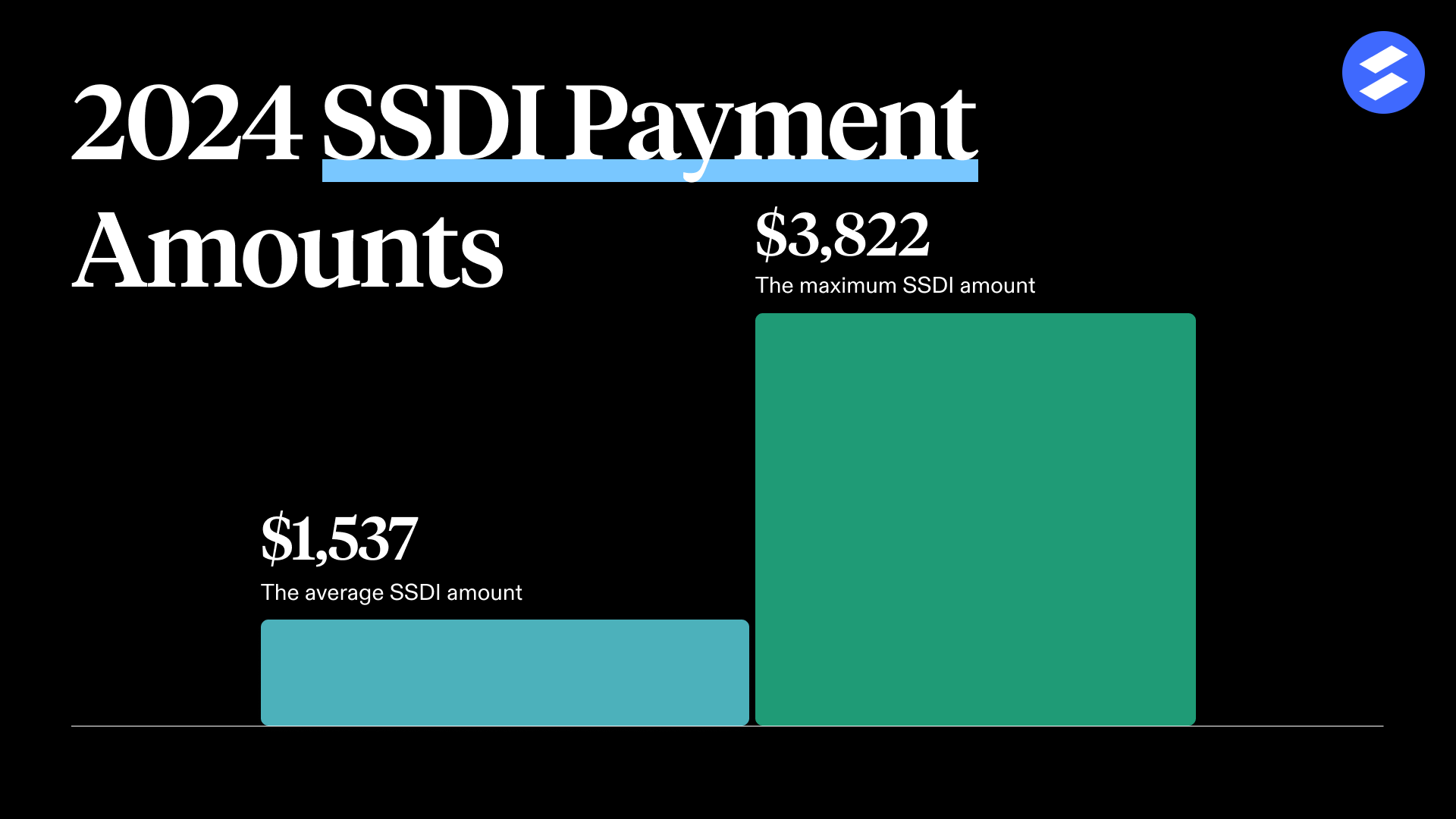Is Peripheral Vascular Disease a Disability?

Atticus offers free, high-quality disability advice for Americans who can't work. Our team of Stanford and Harvard-trained lawyers has a combined 15+ years of legal experience and has helped over 50,000 Americans apply for disability benefits.
If you have peripheral vascular disease (PVD) and are unable to work because of your condition, you may qualify for disability benefits. In 2022, an estimated 11% of disability recipients qualified due to a disease of the circulatory system, which is how the Social Security Administration (SSA) categorizes PVD.
To qualify, you'll need to prove to the SSA that your PVD aligns with its eligibility requirements. In this article, we'll walk you through the criteria for PVD and outline the application process.
What is peripheral vascular disease?
Peripheral vascular disease (PVD) is a cardiovascular condition caused by blockages or narrowing of the blood vessels, which prevent the blood from flowing freely. This systemic, progressive disorder can affect the veins, lymphatic vessels, or arteries. Peripheral vascular disease that affects the arteries is known as peripheral arterial disease (PAD). Most commonly, PVD impacts the legs and feet.
Common types of peripheral vascular disease
There are two main types of PVD:
Functional peripheral vascular disease: This type of PVD does not have an organic cause. It is related to intermittent spasms in the blood vessels, triggered by things like stress and cold temperatures.
Organic peripheral vascular disease: Meanwhile, organic PVD is due to structural changes in the blood vessels caused by buildups of fat in the arteries that block the normal flow of blood.
Peripheral vascular disease symptoms
More than half of people with PVD don't experience symptoms, while others may experience symptoms such as:
Appearance of wounds and ulcers on the feet and legs
Changes to the skin on the legs and feet, such as a lower skin temperature, thinning, or a shiny appearance
Cramping or discomfort in the legs and feet
Development of a red, blue, or purple tinge to the extremities
Gangrene, or death of tissue because of a lack of blood flow
Thinning or loss of hair on legs
Weakened pulses in the legs and feet
Is peripheral vascular disease a disability?
Yes, peripheral vascular disease is a disability. If you have PVD, you may qualify you for Social Security benefits if you are unable to work because of your condition. The SSA lists peripheral vascular disease in its Blue Book — a list of qualifying conditions — under cardiovascular conditions (Section 4.12).
The Americans with Disability Act (ADA), a law passed in 1990 that prohibits discrimination against those with disabilities, also considers peripheral vascular disease a disability if it is substantially limiting.
Can you get disability for peripheral vascular disease?
Yes, you can receive Social Security disability benefits for peripheral vascular disease. To qualify, however, you must demonstrate that your PVD prevents you from working.
For any condition, peripheral vascular disease included, it is easier to qualify for disability if you have another qualifying condition. For example, alongside peripheral vascular disease, it is common to also have conditions such as:
Coronary artery disease
High blood pressure
High cholesterol
You can read more about conditions that qualify for disability in our main guide on conditions.
Criteria for getting disability with peripheral vascular disease
For your peripheral vascular disease to qualify for disability, you must prove you are unable to work because of your condition. It is necessary to provide medically acceptable imaging as specified by the SSA that shows:
You experience intermittent claudication, meaning muscle pain, cramping, or fatigue in the lower limbs that happens when you are active and tends to improve with rest
AND
The systolic blood pressure in your ankle or big toe is affected, and one of the following applies:
You have a resting ankle/brachial systolic blood pressure of less than 0.50
You experience a decrease in systolic blood pressure at the ankle of at least 50% when you're exercising compared to before exercise, and it takes at least 10 minutes for it to return to pre-exercise levels.
You have resting toe systolic blood pressure of less than 30 mmHg
You have a resting toe/brachial systolic blood pressure ratio of less than 0.40
4 questions to ask yourself before applying
If you're able to answer “yes” to most of the following questions, then your peripheral vascular disease is more likely to qualify for Social Security disability benefits:
Do you experience pain or cramping in your lower limbs that tends to get worse with activity and improves when you're resting?
Have you sought treatment for your PVD?
Have you exhausted treatment options for PVD?
Is the systolic blood pressure in your ankle or big toe affected by your peripheral vascular disease, and do you have evidence to prove it?
My peripheral vascular disease meets the criteria. Now what?
If your condition closely aligns with the criteria laid out by the SSA, apply for disability benefits. If you're less sure, consider the following:
Apply now if:
You've been diagnosed with and received treatment for PVD
Your symptoms make it impossible to work and continue even with treatment
You have another health condition that qualifies for disability
Consider waiting and applying later if:
Your PVD symptoms are moderate or seem like they're improving with treatment
You haven't yet stopped working, even if you think you may need to eventually
Probably don’t apply if:
You are still able to work despite your peripheral vascular disease
You earn over $1,550 per month
What type of benefits should I apply for?
When you apply for disability benefits, there are two benefits programs you can apply for:
Social Security Disability Insurance: Social Security Disability Insurance (SSDI) is for those who have worked and paid taxes, including for at least five out of the last 10 years.
Supplemental Security Income: Meanwhile, Supplemental Security Income (SSI) is intended for people who have not worked much or at all, and who have a low income (about $900 per month or less) and few assets.
Both of these programs do include health insurance — Medicare for SSDI and Medicaid for SSI. To learn more about the different eligibility requirements, refer to our article on the differences between SSDI and SSI.
How much is a disability check for peripheral vascular disease?
On average, a monthly disability check for peripheral vascular disease is $1,613.93. It is possible to receive more than this amount for your PVD. In 2024, the maximum monthly amount you can receive with SSDI is $3,822, and SSI is $943 per month.
These maximums apply regardless of which condition you use to qualify for Social Security disability benefits or how many qualifying conditions you list on your application. The amount you receive each month for your PVD depends on your work history if you’re applying for SSDI, or your other sources of income if you're applying for SSI.
For a better understanding of how much you could receive for your peripheral vascular disease, take a look at this rundown on how much people make on SSDI and SSI.

What if my peripheral vascular disease doesn’t meet the criteria?
If your peripheral vascular disease symptoms do not align with the SSA’s requirements, you can still apply for benefits. Just know that you will need to demonstrate that your PVD prevents you from being able to work through medical records.
Even those with severe peripheral vascular disease may not qualify on their first application attempt — an estimated 80% of applicants are denied on their first try. However, if you appeal your initial denial, your odds of approval significantly improve — chances of winning an appeal are roughly 1 in 2.
Get help applying for disability benefits
As you navigate this process, remember there are resources at your disposal. Atticus has compiled resources for people with disabilities that you can tap, whether it's financial assistance you're in need of, or legal aid.
Take our free 2-minute disability quiz. If your answers suggest you might qualify for disability benefits, a member of our team will reach out to learn more about your case. We can also match you with a qualified disability lawyer if you're interested.There are no upfront costs, and you only pay your lawyer if you win benefits.
Frequently asked questions about qualifying for disability
What conditions qualify for disability benefits?
Any medical condition that leaves you unable to work can qualify for Social Security disability benefits. The SSA has a list of common qualifying conditions in the Blue Book. You can also check our full guide to all the conditions that can qualify for disability.
Does my condition affect my disability benefit?
No, the medical condition you have doesn’t affect how much you get from SSDI or SSI. Where you live also doesn’t impact your check size.
How much do SSDI and SSI pay?
SSDI pays up to $3,822 per month, though the average check is about $1,500 in 2024. SSI can pay up to $943 per month in 2024. Read more about how much you can make on SSDI and SSI.
When should I apply for disability benefits?
We recommend applying for benefits as soon as you know you’ll be unable to work. The application process takes a while — a year or longer for the average person. The sooner you submit your application, the sooner you can get your benefits.
Where do I apply for disability benefits?
Apply for Social Security disability benefits online through the SSA website or in-person at your local SSA office. Get step-by-step help in our breakdown of the disability application process.
Do I need a lawyer to apply for disability?
A lawyer isn’t required and you can win benefits without a lawyer. However, the process is complicated and technical — especially when you get to a court hearing. Working with a good lawyer triples your chances of winning an appeal.
Other conditions that can qualify for disability:
Inflammatory bowel disease (IBD) | OCD (obsessive-compulsive disorder) |
Related resources:
Qualifying for Disability: Everything You Should Know
Is it Hard to Get Disability for Mental Illness? (Yes, But This Can Help)

Jackie Jakab
Lead Attorney
For Clients
For Lawyers
At the bottom of many websites, you'll find a small disclaimer: "We are not a law firm and are not qualified to give legal advice." If you see this, run the other way. These people can't help you: they're prohibited by law from giving meaningful advice, recommending specific lawyers, or even telling you whether you need a lawyer at all.
There’s no disclaimer here: Atticus is a law firm, and we are qualified to give legal advice. We can answer your most pressing questions, make clear recommendations, and search far and wide to find the right lawyer for you.
Two important things to note: If we give you legal advice, it will be through a lawyer on our staff communicating with you directly. (Don't make important decisions about your case based solely on this or any other website.) And if we take you on as a client, it will be through a document you sign. (No attorney-client relationship arises from using this site or calling us.)
- © 2025 Atticus Law, P.C.
Terms | Privacy | California Privacy | CHD Policy | Disclaimer | This website is lawyer advertising.